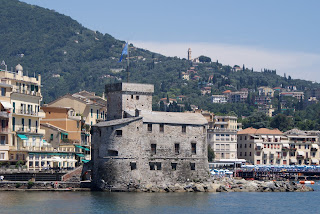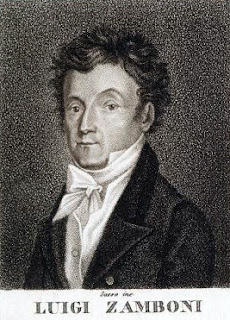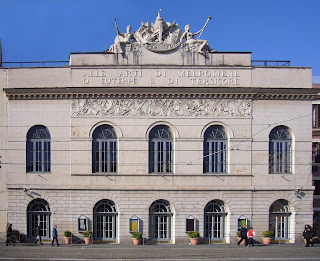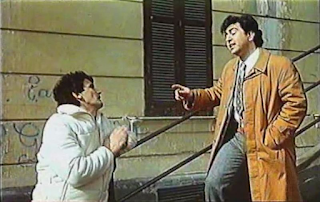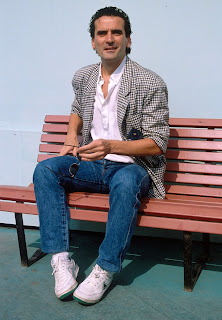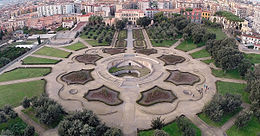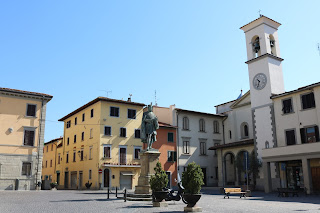Built famous US business with skills learned in Genoa
The chocolatier Domenico Ghirardelli, founder of the
Ghirardelli Chocolate Company in San Francisco, was born on this day in 1817 in
a village just outside Rapallo in Liguria.
 |
| The Ghirardelli Chocolate Shop in Ghirardelli Square on San Francisco's northern waterfront |
After making money as a merchant, initially ferrying
supplies to prospectors in the gold fields, he set up his first chocolate
factory in 1852, drawing on the skills he acquired as an apprentice in Genoa.
By the end of the century, the Ghirardelli Chocolate Company
was one of the city’s most successful businesses, with a prestige headquarters on
North Point Street, a short distance from Fisherman’s Wharf, in a group of
buildings that became known as Ghirardelli Square.
The son of a spice importer, Ghirardelli was born in the
village of Santa Anna, just outside Rapallo, about 25km (16 miles)
along the Ligurian coast from Genoa, in the direction of La Spezia to the
southeast.
His father wanted him to have a trade and once he had
reached his teens sent him to be an apprentice at Romanengo’s, an important confectioner
in Genoa, with a view to setting himself up in business.
 |
| Domenico Ghirardelli arrived in San Francisco from Peru in 1849 |
At the age of only 20 and newly married, he arrived first in
Montevideo in Uruguay, moving on a year later to Lima in Peru, a prosperous
city where there was already an established Italian community.
He set up a confectionery shop on Calle de los Mercaderes,
the city’s main shopping street, which he modelled on Romanengo’s store in
Genoa. After the death of his wife, he
married for a second time, to a Peruvian widow, and would have stayed in Lima had
his former neighbour, an American from Pennsylvania who had moved to San Francisco,
not written to him urging him to follow.
The neighbour, James Lick, who would go on to become the
richest man in California, had set himself up on the proceeds of 600lb (272kg)
of chocolate Ghirardelli had given him to sell. With San Francisco on the brink
of an economic boom after the discovery of gold in 1848, it was too good an
opportunity to miss.
Trading first in general merchandise, Ghirardelli rapidly
expanded from running a delivery service to owning grocery stores in San
Francisco and Stockton, plus a soda fountain, a coffee house and a
part-interest in a hotel. Within two
years, he had amassed wealth of $25,000, which then had the buying power of
around $750,000 (€610,000) today.
 |
| The Ghirardelli factory was established just back from the San Francisco waterfront |
The butterfat in the paste melted, dripping out on to the
floor, leaving behind in the bags a greaseless residue that could be ground
into a powder, which Ghirardelli patented and sold under the name of Broma, to
be used as a cake ingredient or for making a hot cocoa drink.
The recession of the 1870s brought a massive scaling back,
with many of the company’s assets, including the house in Oakland and several
stores, being auctioned off to keep the factory going.
Yet, despite competition from others keen to exploit
chocolate’s continuing popularity, the business recovered, with Ghirardelli’s
sons increasingly involved. Broma,
rebranded as Ghirardelli’s Chocolate Powder, continued to be a big seller. By the late 1880s, the company was producing
and selling one million pounds (453,000kg) of the powder each year.
Ghirardelli retired in 1889, handing control to his
sons. In 1892, needing to expand, the
company acquired a large woollen mill near the city’s northern waterfront at what
his now Ghirardelli Square.
He died in 1894, contracting influenza during an extended
visit to Rapallo, where he had gone in order to rediscover his roots. His body
was returned to San Francisco, to be buried in the family mausoleum in
Oakland’s Mountain View Cemetery.
Production continued at Ghirardelli Square until the 1960s,
when the business was sold and the manufacturing operation moved to San
Leandro. Today, while still trading
under the family name as the third oldest chocolate manufacturer in the United
States, the business is a subsidiary of the Swiss company, Lindt and Sprüngli. There is still a Ghirardelli shop in the Ghirardelli Square shopping and restaurant complex
Rapallo, larger and a little cheaper than its exclusive
neighbour Portofino, is an attractive seaside town of the eastern Italian
Riviera, known as the Riviera di Levante. The town developed around a harbour
guarded by a small castle – Il Castello sul Mare – built in 1551, which sits
right on the water’s edge. Behind the
harbour is a network of narrow streets. There are boat service to Portofino, as
well as Santa Margherita Ligure and Camogli, while the main Genoa to Pisa
railway line passes through the town.
Romanengo’s confectionery store in Via Soziglia in Genoa
has become a tourist attraction in itself, a wonderfully ornate emporium barely
changed since it was refurbished lavishly in the mid-19th century,
having opened for business for the first time in 1814. Modelled on Parisian confectioners’ shops, it
has a marble floor, a frescoed ceiling, elegant chandeliers and beautiful inlaid rosewood
shelving and counters, with endless dishes of brightly coloured confectionery
in glass cases. The company logo of a dove carrying an olive branch symbolised
peace at the end of the Napoleonic Wars.
More reading:
Michele Ferrero - the man who invented Nutella
Humble beginnings of chocolate giant Ferrero
The entrepreneur behind Perugina chocolates
Also on this day:
1513: Death of Pope Julius II
More reading:
Michele Ferrero - the man who invented Nutella
Humble beginnings of chocolate giant Ferrero
The entrepreneur behind Perugina chocolates
Also on this day:
1513: Death of Pope Julius II
1609: The birth of military leader Raimondo Montecuccoli
1868: Death of painter and revolutionary Giuseppe Abbati
1868: Death of painter and revolutionary Giuseppe Abbati
(Picture credits: Ghirardelli store by PictorialEvidence; San Francisco waterfront by Saopaulo1; Rapallo Castle by RegentsPark; all via Wikimedia Commons; Romanengo store from www.romanengo.com)
